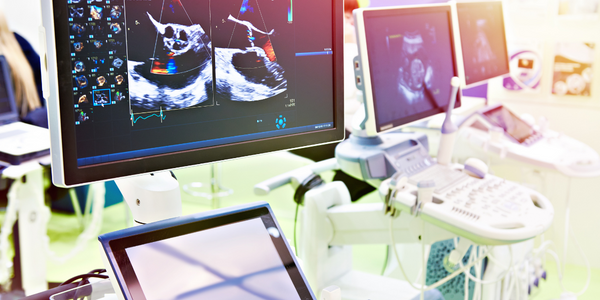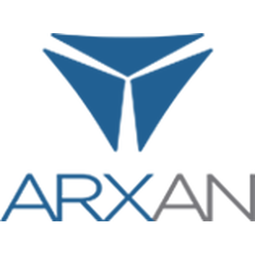下载PDF
Arxan Protects Pacemaker Medical Device

技术
- 传感器 - 声学传感器
适用行业
- 医疗保健和医院
挑战
医生需要能够: 安全地读取和监控医疗设备提供的患者数据,并使用移动应用程序控制和监控医疗设备。然而,这家医疗设备公司面临着来自黑客潜在篡改的安全挑战——包括注入或挂钩恶意代码和/或对内存的攻击——这可能会危及应用程序的运行时操作,从而导致不安全或不当操作和对患者安全的潜在危险
客户
未公开
关于客户
作为医疗器械市场的先驱和全球最大的医疗器械制造商之一,该组织在生产新的医疗器械应用方面处于领先地位。
解决方案
该公司的应用程序是使用 Xamarin 创建的,现在受到 Arxan Application Protection 的保护。他们遵循 Arxan 获得专利且经过验证的方法来保护医疗保健和医疗设备提供商的应用程序,通过保护二进制代码和加密密钥,最大限度地减少对患者健康和安全的威胁,从而确保应用程序中使用的医疗健康记录的隐私和机密性。 Arxan “Guards” 被插入到应用程序二进制文件中,以加固和防篡改代码,在运行时检测攻击并保护应用程序。保护解决方案既是被动的,也是主动的。它能够:通过用原始代码替换软件应用程序的被篡改元素来修复它们,向监控控制台提供警报和“电话回家”协议,并通过退出、失败和通知功能对攻击做出反应。这些技术可防止可能暴露代码和 IP 的应用程序或应用程序逻辑的反汇编或反编译。通过在二进制文件中注入防护,Arxan 保护被应用在编译后阶段。一旦受到保护,黑客就只能看到混淆代码或“乱码”。使用这种方法,安全性“内置”到应用程序中,因此它在其驻留的任何地方都受到保护——台式机、平板电脑和/或手机上。
收集的数据
Electronic Medical Record, Medical Diagnostic Instruments, Personal Medical, Patient Data
运营影响
相关案例.

Case Study
Hospital Inventory Management
The hospital supply chain team is responsible for ensuring that the right medical supplies are readily available to clinicians when and where needed, and to do so in the most efficient manner possible. However, many of the systems and processes in use at the cancer center for supply chain management were not best suited to support these goals. Barcoding technology, a commonly used method for inventory management of medical supplies, is labor intensive, time consuming, does not provide real-time visibility into inventory levels and can be prone to error. Consequently, the lack of accurate and real-time visibility into inventory levels across multiple supply rooms in multiple hospital facilities creates additional inefficiency in the system causing over-ordering, hoarding, and wasted supplies. Other sources of waste and cost were also identified as candidates for improvement. Existing systems and processes did not provide adequate security for high-cost inventory within the hospital, which was another driver of cost. A lack of visibility into expiration dates for supplies resulted in supplies being wasted due to past expiry dates. Storage of supplies was also a key consideration given the location of the cancer center’s facilities in a dense urban setting, where space is always at a premium. In order to address the challenges outlined above, the hospital sought a solution that would provide real-time inventory information with high levels of accuracy, reduce the level of manual effort required and enable data driven decision making to ensure that the right supplies were readily available to clinicians in the right location at the right time.

Case Study
Gas Pipeline Monitoring System for Hospitals
This system integrator focuses on providing centralized gas pipeline monitoring systems for hospitals. The service they provide makes it possible for hospitals to reduce both maintenance and labor costs. Since hospitals may not have an existing network suitable for this type of system, GPRS communication provides an easy and ready-to-use solution for remote, distributed monitoring systems System Requirements - GPRS communication - Seamless connection with SCADA software - Simple, front-end control capability - Expandable I/O channels - Combine AI, DI, and DO channels

Case Study
Driving Digital Transformations for Vitro Diagnostic Medical Devices
Diagnostic devices play a vital role in helping to improve healthcare delivery. In fact, an estimated 60 percent of the world’s medical decisions are made with support from in vitrodiagnostics (IVD) solutions, such as those provided by Roche Diagnostics, an industry leader. As the demand for medical diagnostic services grows rapidly in hospitals and clinics across China, so does the market for IVD solutions. In addition, the typically high cost of these diagnostic devices means that comprehensive post-sales services are needed. Wanteed to improve three portions of thr IVD:1. Remotely monitor and manage IVD devices as fixed assets.2. Optimizing device availability with predictive maintenance.3. Recommending the best IVD solution for a customer’s needs.

Case Study
HaemoCloud Global Blood Management System
1) Deliver a connected digital product system to protect and increase the differentiated value of Haemonetics blood and plasma solutions. 2) Improve patient outcomes by increasing the efficiency of blood supply flows. 3) Navigate and satisfy a complex web of global regulatory compliance requirements. 4) Reduce costly and labor-intensive maintenance procedures.

Case Study
Harnessing real-time data to give a holistic picture of patient health
Every day, vast quantities of data are collected about patients as they pass through health service organizations—from operational data such as treatment history and medications to physiological data captured by medical devices. The insights hidden within this treasure trove of data can be used to support more personalized treatments, more accurate diagnosis and more advanced preparative care. But since the information is generated faster than most organizations can consume it, unlocking the power of this big data can be a struggle. This type of predictive approach not only improves patient care—it also helps to reduce costs, because in the healthcare industry, prevention is almost always more cost-effective than treatment. However, collecting, analyzing and presenting these data-streams in a way that clinicians can easily understand can pose a significant technical challenge.






